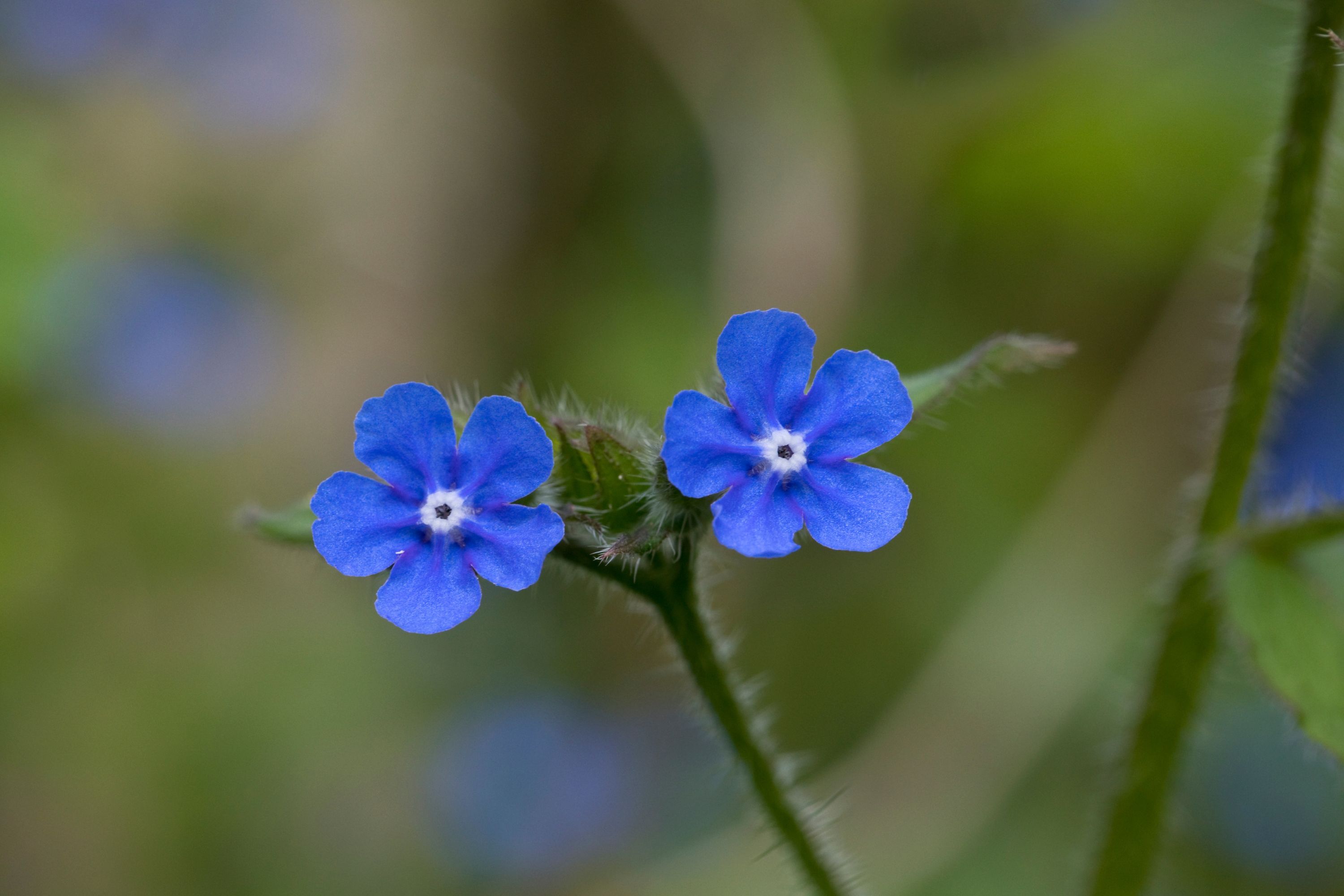Evergreen bugloss
(Pentaglottis sempervirens)

Description
Pentaglottis sempervirens is a species of flowering plant that belongs to the Boraginaceae family. It is commonly known as green alkanet or evergreen bugloss and is native to western Europe. In this article, we will provide a detailed overview of this plant species, including its physical characteristics, habitat, growing conditions, and its importance in horticulture. Physical Characteristics Pentaglottis sempervirens is a perennial plant that can grow up to 60 cm in height. It has a deep taproot system that allows it to survive in dry conditions. The plant's leaves are large, rough, and hairy, with a dark green color that is almost glossy. The plant's stem is also hairy and produces small blue-purple flowers in clusters at the top of the plant. The flowers bloom from April to June and are followed by small black fruits. Habitat Pentaglottis sempervirens is a plant that thrives in disturbed habitats such as waste places, road verges, and gardens. It is commonly found in woodland areas, hedgerows, and along riverbanks. The plant is also found in open fields, meadows, and grasslands. It can grow in a variety of soil types, including clay, loam, and sandy soils, but it prefers well-drained soil. Growing Conditions Pentaglottis sempervirens is an easy-to-grow plant that requires little maintenance. It can be propagated from seed, cuttings, or division. Seeds can be sown in the autumn or spring, and cuttings can be taken in the summer. The plant prefers full sun to partial shade and grows best in moist soil. It can tolerate drought conditions once established, but it is important to ensure that the plant is watered regularly during the first year of growth. The plant also benefits from the addition of organic matter, such as compost, to the soil. Importance in Horticulture Pentaglottis sempervirens is a popular plant in horticulture due to its attractive foliage and flowers. The plant is often grown as a ground cover, and it is an excellent choice for difficult areas such as dry slopes and banks. The plant's deep taproot system makes it ideal for stabilizing soil on slopes and preventing erosion. The plant also attracts a wide range of pollinators such as bees and butterflies, making it a valuable addition to wildlife gardens. However, it is important to note that Pentaglottis sempervirens can be invasive in some areas. The plant has a tendency to self-seed, and it can quickly form large colonies that outcompete native plant species. In areas where the plant is invasive, it is important to control its growth and prevent it from spreading to other areas. In conclusion, Pentaglottis sempervirens is a beautiful and useful plant that has a variety of applications in horticulture. Its deep taproot system makes it ideal for stabilizing soil on slopes and preventing erosion, and its attractive foliage and flowers make it a popular choice for ground cover. However, it is important to be aware of the plant's potential for invasiveness and to take steps to control its growth in areas where it is problematic. Overall, Pentaglottis sempervirens is a valuable addition to any garden or landscape.
Taxonomic tree:







